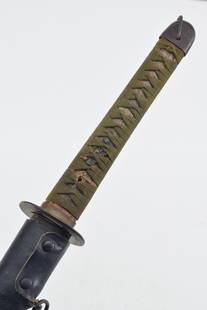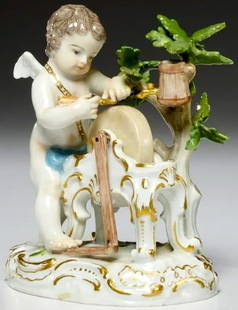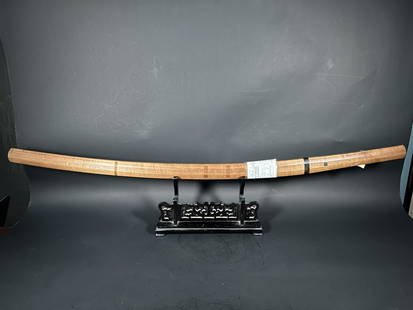
Japanese Woodblock, Print, Hearing Story, 19th C.
Similar Sale History
View More Items in Weapons & ArmorRelated Weapons & Armor
More Items in Japanese Weapons & Armor
View MoreRecommended Collectibles
View More









Item Details
Description
Five women are drawn holding hexagonal containers while kneeling before a man holding the scabbard of his sheathed sword. A bluebird sits on a tree branch behind the man.
Condition
Weight (lbs): 0.25
Height (In.): 10.25
Width (In.): 14.75
Depth (In.): N/A
Size: 14.75 x 10.25"
Maker: Utagawa School
Material: Paper
Date: 19th C
Provenance: N/A
Condition: Some wrinkling to the toned paper, some wear to the top edge.
History: Woodblock printing in Japan (moku-hanga) is a technique best known for its use in the ukiyo-e artistic genre of single sheets, but it was also used for printing books in the same period. Woodblock printing had been used in China for centuries to print books, long before the advent of movable type, but was widely adopted in Japan during the Edo period (1603-1868). Although similar to woodcut in Western printmaking in some regards, the moku-hanga technique differs in that it uses water-based inks—as opposed to western woodcut, which often uses oil-based inks. The Japanese water-based inks provide a wide range of vivid colors, glazes, and transparency.
Condition: Some wrinkling to the toned paper, some wear to the top edge. History: Woodblock printing in Japan (moku-hanga) is a technique best known for its use in the ukiyo-e artistic genre of single sheets, but it was also used for printing books in the same period. Woodblock printing had been used in China for centuries to print books, long before the advent of movable type, but was widely adopted in Japan during the Edo period (1603-1868). Although similar to woodcut in Western printmaking in some regards, the moku-hanga technique differs in that it uses water-based inks—as opposed to western woodcut, which often uses oil-based inks. The Japanese water-based inks provide a wide range of vivid colors, glazes, and transparency.
Buyer's Premium
- 24.5%
Japanese Woodblock, Print, Hearing Story, 19th C.
Estimate $100 - $200
Shipping & Pickup Options
Item located in Garrison, NY, usSee Policy for Shipping
Payment

TOP
















































































![George Washington Signed Discharge: Partly printed discharge document signed by George Washington, as Commander in Chief of the Armies of the United States. Newburgh, [New York], 4 January 1783. 1 page, ## x ## in. Undersigned by Washin](https://p1.liveauctioneers.com/7226/322253/173251475_1_x.jpg?height=310&quality=70&version=1710004847)

